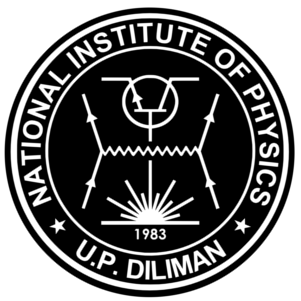The Philippine Science High School Western Visayas Campus (PSHS-WVC), one of the campuses of the Philippine Science High School System, is located at Brgy. Bito-on, Jaro, Iloilo City, Philippines. Established in 1993, the school admits and grants scholarships to students who are gifted in the sciences and mathematics. Most of the scholars are from Western Visayas which covers the provinces of Aklan, Antique, Capiz, Guimaras, Iloilo and Negros Occidental, as well as the Mimaropa, which includes the provinces of Occidental Mindoro, Oriental Mindoro, Marinduque, Romblon and Palawan. Until the establishment of PSHS Central Visayas in 2009, the campus also catered to the students from the Central Visayas provinces of Bohol, Cebu, Negros Oriental and Siquijor.
Organized in 1989 by the BPI Foundation, Inc., the corporate social responsibility arm of the Bank of the Philippine Islands (BPI), with the Department of Science and Technology (DOST), the BPI-DOST Science Awards recognizes exceptional science and engineering students from partner universities nationwide. These students are individuals whose efforts made them excel in specialized fields of science such as mathematics, physics, engineering, chemistry, biology, and computer science. The awardees are recognized for their potential contributions to industry and nation-building and selected based on their academic and research performance and nomination from the school.


The space program of the Philippines is currently maintained by the Philippine Space Agency (PhilSA) together with various agencies under the Department of Science and Technology (DOST). The space program includes space research and development, and is funded through the National SPACE Development Program (NSDP) by the DOST and received an initial budget of ₱1 billion in 2020.

The Philippine Space Agency (PhilSA) is the national space agency of the Philippines.

Diwata-1 also known as PHL-Microsat-1 was a Philippine microsatellite launched to the International Space Station (ISS) on March 23, 2016, and was deployed into orbit from the ISS on April 27, 2016. It was the first Philippine microsatellite and the first satellite built and designed by Filipinos. It was followed by Diwata-2, launched in 2018.

Project NOAH (Nationwide Operational Assessment of Hazard) is the Philippines' primary disaster risk reduction and management program. Managed by the University of the Philippines, it was initially administered by the Department of Science and Technology (DOST) from 2012 to 2017.

Fortunato "Boy" Tanseco de la Peña is a Filipino engineer and professor who served as the Secretary of Science and Technology in the Cabinet of President Rodrigo Duterte from 2016 to 2022. Before he assumed leadership of the Department of Science and Technology (DOST), he was the Undersecretary for Scientific and Technological Services from 2001 to 2014. Except for his brief retirement from 2014 to 2016, he has been with the department since 1982.

Diwata-2 or Diwata-2B is a Philippine microsatellite launched on October 29, 2018. It is the first satellite launched under the STAMINA4Space program.

The Philippine Scientific Earth Observation Microsatellite (PHL-Microsat) was a satellite program carried by the Department of Science and Technology (DOST) of the Philippines in cooperation with the Tohoku and Hokkaido Universities of Japan.

Maya-1 was a Filipino nanosatellite. It was developed under the Philippine Scientific Earth Observation Microsatellite program (PHL-Microsat) and was jointly implemented by the University of the Philippines and the Department of Science and Technology as part of the Kyushu Institute of Technology-led multinational second Joint Global Multi-nations Birds Satellite (Birds-2). Maya-1 was the first nanosatellite of the Philippines.

The DOSTAdvanced Science and Technology Institute is a research and development organization based in the Quezon City, Philippines. It is one of the research and development institutes of the Department of Science and Technology of the Philippine government.
The Space Technology and Applications Mastery, Innovation and Advancement is a space technology program by the Philippine government. It is considered as the successor program to the Philippine Scientific Earth Observation Microsatellite (PHL-Microsat) program, a cooperation between the Philippine government and Japanese universities to develop microsatellites. The program is funded under the Department of Science and Technology.
The University Laboratory for Small Satellites and Space Engineering Systems (abbreviated and stylized as ULyS3ES) is a space research complex of two buildings.

Joel Joseph Sacro Marciano Jr. is a Filipino engineer, academic and the first and current Director General of the Philippine Space Agency, a government agency under the Office of the President in charge of the Philippines' national space program.
Maya-2 was a Filipino nanosatellite. It succeeded Maya-1, the first Filipino nanosatellite, which was deorbited in November 2020.
The Multispectral Unit for Land Assessment (MULA) is a planned Filipino satellite. Upon completion it will become the largest Filipino-made satellite.
DRUMS is an experimental spacecraft that will test proximity operation near space debris. The microsatellite carries two 'mock space debris' which once deployed will be used as a target for demonstrating approach and contact.
Gay Jane P. Perez is a Filipino physicist and environmental scientist whose research involves satellite observation of environmental conditions, and the applications of that data in agricultural planning. She is a professor in the Institute of Environmental Science and Meteorology at the University of the Philippines Diliman, and Deputy Director General of the Philippine Space Agency.














